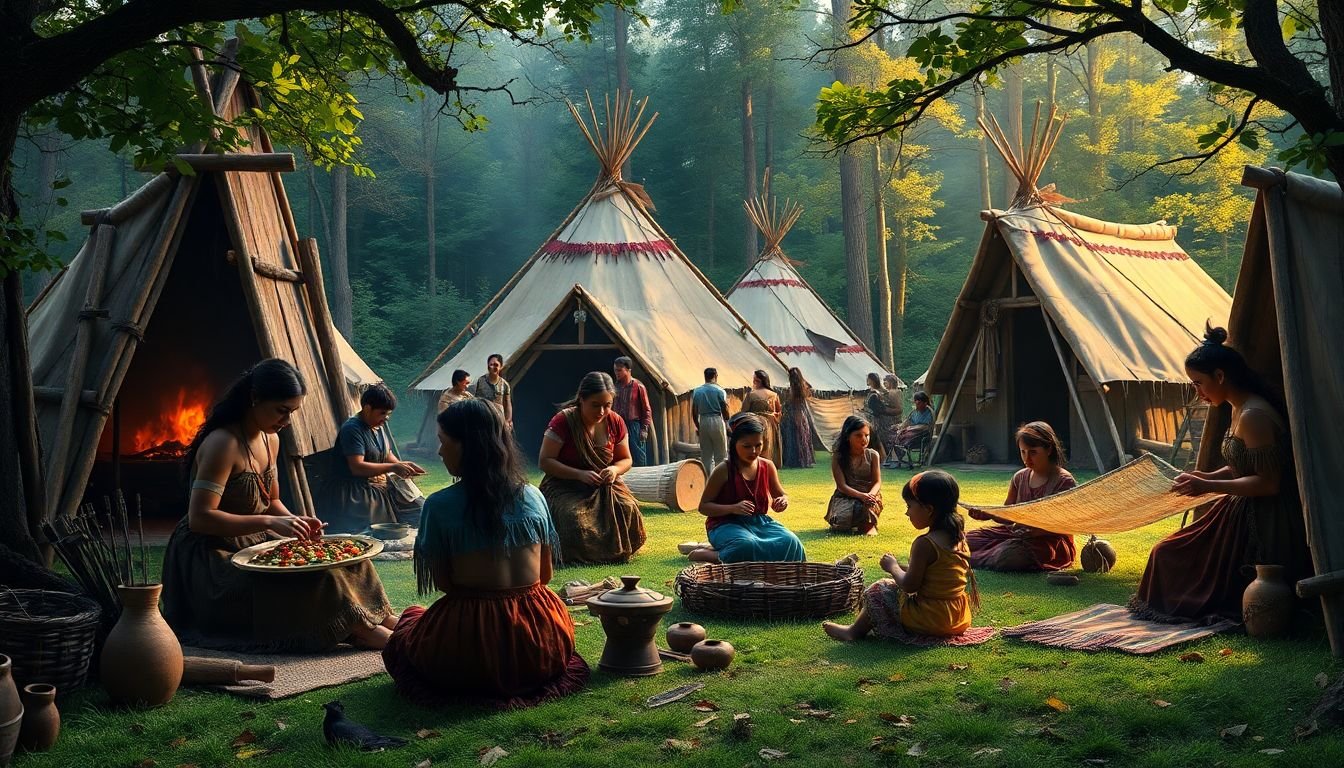
Native American Tribes of Pennsylvania: A History of Resilience and Adaptation
Imagine Pennsylvania long ago. Before highways and cities, it was home to vibrant Native American tribes. These groups shaped the land and their stories are very important. They teach us about perseverance, change, and what it means to call a place home. Pennsylvania was a meeting point for many different tribes. These tribes each had their own way of life. The history of Pennsylvania’s Native American tribes is one of strength. These tribes adapted to challenges and left a big mark on the state. Their contributions made up the culture we see today.
The Lenape (Delaware): Original Inhabitants
The Lenape people were here first. They called the eastern parts of Pennsylvania home. They had a special connection to the land and followed their own traditions.
Origins and Territory of the Lenape
Lenape stories tell how they came to be. Their land stretched across Pennsylvania, New Jersey, Delaware, and New York. This large area was the heart of the Lenape world.
Imagine this: The Lenape lived in harmony with nature. They understood the seasons and the resources around them. That helped them thrive for centuries.
Lenape Culture and Society
The Lenape lived in organized groups called clans. Leaders guided the people and made important decisions. They grew crops, hunted animals, and fished in the rivers. Crafting was also important. They made baskets, pottery, and tools. These showed off their skills and way of life.
Displacement and Diaspora
When Europeans came, life changed for the Lenape. They lost land and were forced to move. Treaties, like the Treaty of Easton, made promises, but the Lenape still faced many problems. It was a hard time, but their culture lived on, even far away.
The Susquehannock: Powerful Neighbors
The Susquehannock were a powerful tribe. They lived near the Susquehanna River. They were known as strong warriors and skilled traders.
Rise and Dominance
The Susquehannock created a strong group in the Susquehanna River Valley. They became known as skilled warriors and traders. Their power grew as they controlled trade in the region.
Interactions with Europeans
When European explorers and traders arrived, the Susquehannock got involved in the fur trade. This trade brought new goods but it also caused problems. Conflicts with other tribes and European powers began.
Decline and Disappearance
Disease, warfare, and getting mixed into other cultures led to the Susquehannock’s decline. The Conestoga Massacre was a tragic event. It marked the end of their organized society.
The Shawnee: Migrant Warriors
The Shawnee moved around a lot. They traveled across the Eastern United States. They also spent time in Pennsylvania.
Origins and Migrations
The Shawnee started in the Ohio River Valley. Because of fighting and land pressures, they moved several times. These migrations took them through Pennsylvania.
Shawnee in Pennsylvania
The Shawnee built settlements in Pennsylvania. They traded with other tribes and European settlers. They played a key role in the fur trade. Also, they were a link between different groups of people.
Legacy and Influence
The Shawnee fought for Native American rights. They left a lasting mark on Pennsylvania’s history. Leaders like Tecumseh fought to protect their way of life.
Other Tribes and Their Presence
Many other tribes also lived in or traveled through Pennsylvania.
The Erie
The Erie tribe lived in the northwestern part of Pennsylvania. They had contact with other tribes in the region.
The Iroquois Confederacy
The Iroquois Confederacy had a big impact on Pennsylvania. They had a relationship with the Lenape and other tribes. The Covenant Chain agreement helped shape relations with the colonial government.
Western Pennsylvania Tribes
Other tribes also had settlements or hunting grounds in Western Pennsylvania. These tribes added to the diversity of the region.
Contemporary Native American Communities in Pennsylvania
Today, Native American tribes and communities still exist in Pennsylvania.
Recognized and Unrecognized Tribes
Getting federal recognition is a challenge for tribes in Pennsylvania. Some tribes are recognized by the state. Native American groups work hard to keep their culture alive.
Cultural Preservation and Advocacy
Native American communities work to keep their culture, language, and traditions alive. Groups fight for Native American rights and needs in Pennsylvania.
Conclusion
The Native American tribes of Pennsylvania were diverse and strong. They shaped the state’s history and culture. Now it is time to learn more about Native American history in Pennsylvania. Support modern Native American communities. Remember the lasting legacy of Pennsylvania’s Native American tribes. They continue to seek respect and fairness.
